Apple is one of the most important and popular fruits that grow on trees. Since prehistoric times, people have enjoyed the delicious flavor of apples. Apples also serve as a source of fiber, some vitamins, and other nutrients.
Thousands of varieties of apples exist. Their color ranges from various shades of red to green and yellow, and their flavor varies from tart to sweet. Apple trees belong to the rose family. Their beautiful white to pink flowers open in spring and look like tiny roses.
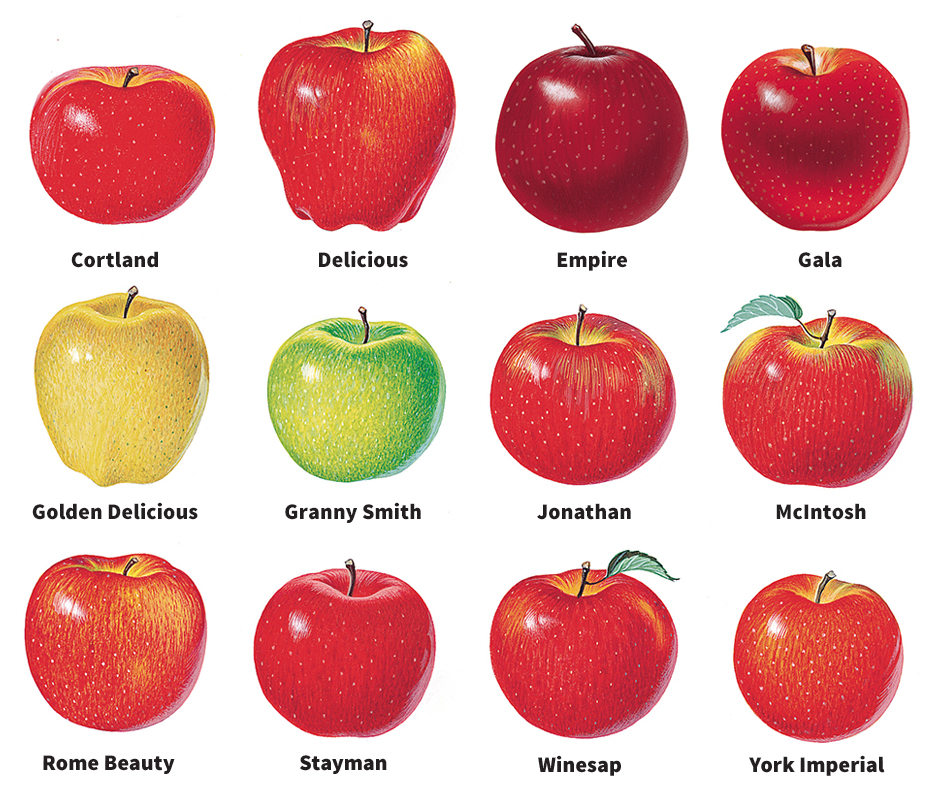
Apple growers throughout the world produce about 105 million tons (95 million metric tons) of the fruit annually. China leads the world in apple production. Other leading apple-growing countries include India, Iran, Italy, Poland, Turkey, and the United States.
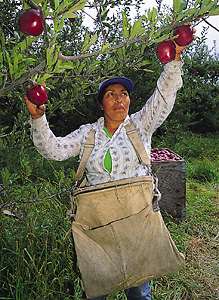
Apples rank as an important crop in several U.S. regions, especially the Pacific Northwest. Washington produces the most apples, followed by New York, Michigan, Pennsylvania, and California. The U.S. apple crop totals about 5 million tons (4.5 million metric tons) each year, with a wholesale value of about $3 billion.

In Canada, apples rank as one of the chief fruit crops. They are grown commercially in British Columbia, New Brunswick, Nova Scotia, Ontario, Prince Edward Island, and Quebec. Canadian growers produce about 420,000 tons (380,000 metric tons) of apples yearly.
People eat more than half of all apples fresh. They also bake many of the rest into pies and many other dishes. Apples serve as the main ingredient in applesauce, apple butter, apple juice, and apple jelly. Apple juice can be made into vinegar or wine. Apple products may come canned, bottled, dried, or frozen.
Apples consist of about 85 percent water. They also contain calcium, fiber, folate, iron, pectin, phosphorus, potassium, and vitamins A and C.
Through the ages, apples have appeared in legends, poems, and religious books. In the Swiss legend of William Tell, a tyrant arrests an archer but promises to free him if he shoots an apple off his son’s head. Tell does so and later kills the tyrant with another arrow. Many people believe an apple was the fruit that, according to the Bible, Adam and Eve ate in the Garden of Eden.
Varieties of apples
Although thousands of kinds of apples exist, only about 100 varieties appear commonly in commercial orchards and in home gardens. Six varieties of apples—Delicious, Fuji, Gala, Golden Delicious, Granny Smith, and Honeycrisp—are among the leading varities of apples produced in the United States. Ambrosia and Gala apples are among the chief varieties grown in Canada. Growers around the world have introduced disease-resistant varieties, such as Enterprise, Gold Rush, and Liberty.
The many kinds of apples differ in color, flavor, shape, size, and texture, as shown in the table in this article. Apple skin may appear green, yellow, or various shades of red. Colors of apple flesh include cream, greenish-white, white, or yellow. The texture of the fruit may be soft or firm, and the flavor is tart or sweet. Generally, people eat sweet apples fresh and use tart varieties to make such products as applesauce, apple butter, and vinegar. Flavorful applesauces and ciders often consist of a blend of several varieties.
A number of species of wild apples exist. Most wild apples are crab apples ).
Apple growers in other countries raise several varieties that are seldom cultivated in the United States. For example, the Cox’s Orange Pippin is grown in Denmark, the Netherlands, and the United Kingdom. The Bramley ranks as a favorite cooking apple in the United Kingdom.
Raising apples
Apples belong to a group of fruits called pomes that have a fleshy outer layer and a paperlike core. An apple’s core usually encloses from 5 to 10 seeds.
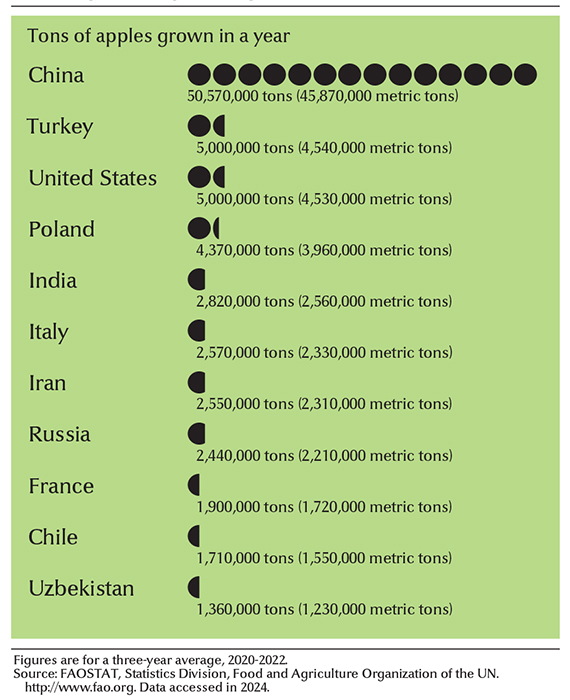
Apple trees may grow more than 40 feet (12 meters) tall. Most apple trees do not grow well in areas with extremely cold winters or long, hot summers. They thrive in regions with moderately cold winters, requiring exposure to cool temperatures for part of the year to flourish. Flowers bloom on apple trees in late spring. The flowers rely on insects for pollination. For this reason, some growers place hives of honey bees in their orchards while the trees blossom. The blossoms must be cross-pollinated with pollen from a different apple variety to form fruit.
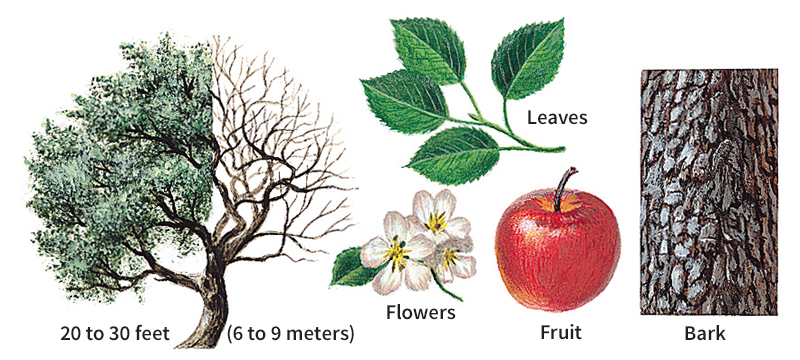
Seeds grow in the ovary of a pollinated flower, and the ovary and other parts of the flower develop into the fruit of the tree. Most varieties of apples ripen in 140 to 200 days after pollination.
Apple trees can bear fruit for as long as 100 years. But most of the apple trees grown in orchards are replaced every 12 to 30 years.
Planting and caring for apple trees.
Seeds from an apple will not produce trees of the same variety. Therefore, most apple trees are grown from buds. Growers cut the buds from a healthy tree that has produced the kind of fruit desired and graft them to rootstocks. A rootstock is a root or a root plus a stem). The resulting trees will bear apples of the same variety as those of the tree from which the buds were cut. Apple growers use the rootstocks of trees selected for such characteristics as resistance to pests, tolerance of cold and other environmental factors, and ability to produce dwarf trees. By choosing different rootstocks, growers can vary the height of the tree from 3 to 30 feet (0.9 to 9 meters).
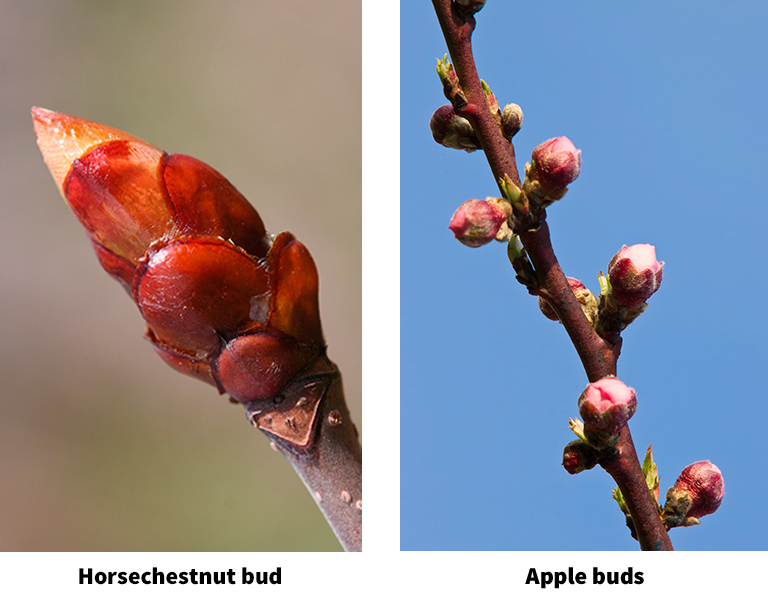
Apple trees in orchards are planted in rows from 14 to 24 feet (4 to 7 meters) apart. Within rows, growers plant trees from 6 to 18 feet (2 to 5 meters) apart. This spacing enables growers to spray the orchards and to harvest the fruit easily. Growers prune the trees to improve the quality of the fruit and to control pests. A young apple tree starts to bear fruit in 3 to 5 years, depending on the rootstock, the variety, and other factors.
Pests and diseases.
Several insects and diseases attack apple trees. The codling moth, the most destructive pest that attacks apples, lays its eggs on the leaves and on the fruits in spring. Larvae (caterpillars) hatch from the eggs and bore into the young apples. Growers fight codling moths by spraying the trees with insecticides during the period that the females lay their eggs.
The European red mite, another pest, feeds on the leaves of plants in the rose family, including apples. The females lay their eggs on the bark of the trees during the fall, and the young mites hatch in spring just before the trees bloom. The mites consume the contents of the leaf cells, reducing the plant’s ability to make its food through photosynthesis. Apple growers control the mites by using pesticides or by introducing other mites, and certain beetles, that prey on the pest mites without harming the trees.
Growers control the apple maggot , an insect that attacks the fruit, by spraying apple trees with an insecticide several times in midsummer, when the adult flies emerge and begin to lay eggs. Two species of sucking insects, aphids and San Jose scales , also harm apple trees.
A fungus causes apple scab, the most damaging disease that attacks apple trees. Apple scab is most severe in cool, humid areas. The fungus spends the winter on the ground in the dead apple leaves. In spring, rain releases spores from the fungus, and they infect the flowers, fruit, and leaves. Growers control apple scab by spraying the trees with fungicides.
Fire blight, a disease caused by bacteria, kills blossoms, leaves, and twigs, and sometimes entire trees. Leaves on infected branches take on a scorched appearance. To combat fire blight, growers prune infected wood and spray trees with an antibiotic. Some growers avoid the disease by planting apple varieties that can resist the bacteria.
Harvesting and processing.
Apple growers start to harvest their crop in late summer or early fall. Harvest dates vary according to the variety of apples and the geographical location. Workers pick apples by hand.
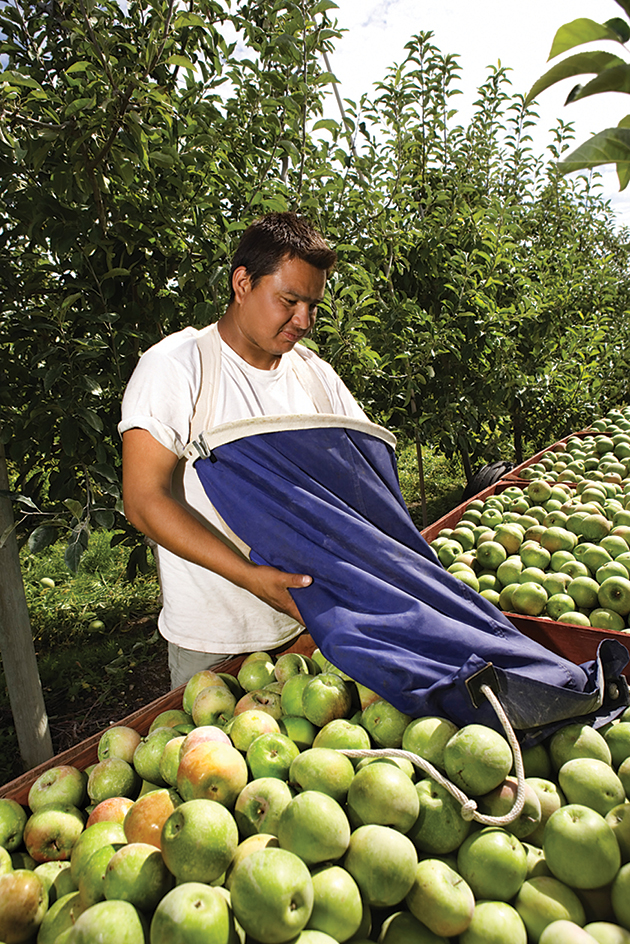
Some newly harvested apples are soon sold fresh to consumers. However, a significant portion of the annual crop is stored in cold rooms that have a controlled atmosphere. The fruit stays fresh in these rooms for up to 12 months, and so consumers can buy the apples the year around. A large percentage of the apple crop is processed, including apples that are canned, dried, or frozen.
History
Apples have served as a favorite fruit of people for tens of thousands of years. Archaeologists studying the ruins of Stone Age villages in Europe have found the charcoal remains of apples. By the 300’s B.C., the ancient Greeks were growing several varieties of apples. The ancient Romans also cultivated the fruit. The Romans spread various kinds of apples throughout much of England and other parts of Europe during their numerous military conquests. The early American colonists brought both apple seeds and apple trees with them from England. The colonists dried their apples or used them in making cider, vinegar, and apple butter.
As the settlers moved westward across America, they took apple seeds and seedling trees with them. Some settlers found that Indians had already brought seeds from apple trees in the East and had planted them around their villages.
During the early 1800’s, a pioneer apple planter named John Chapman distributed apple seeds and apple trees to settlers in Ohio and Indiana. He became known as Johnny Appleseed .
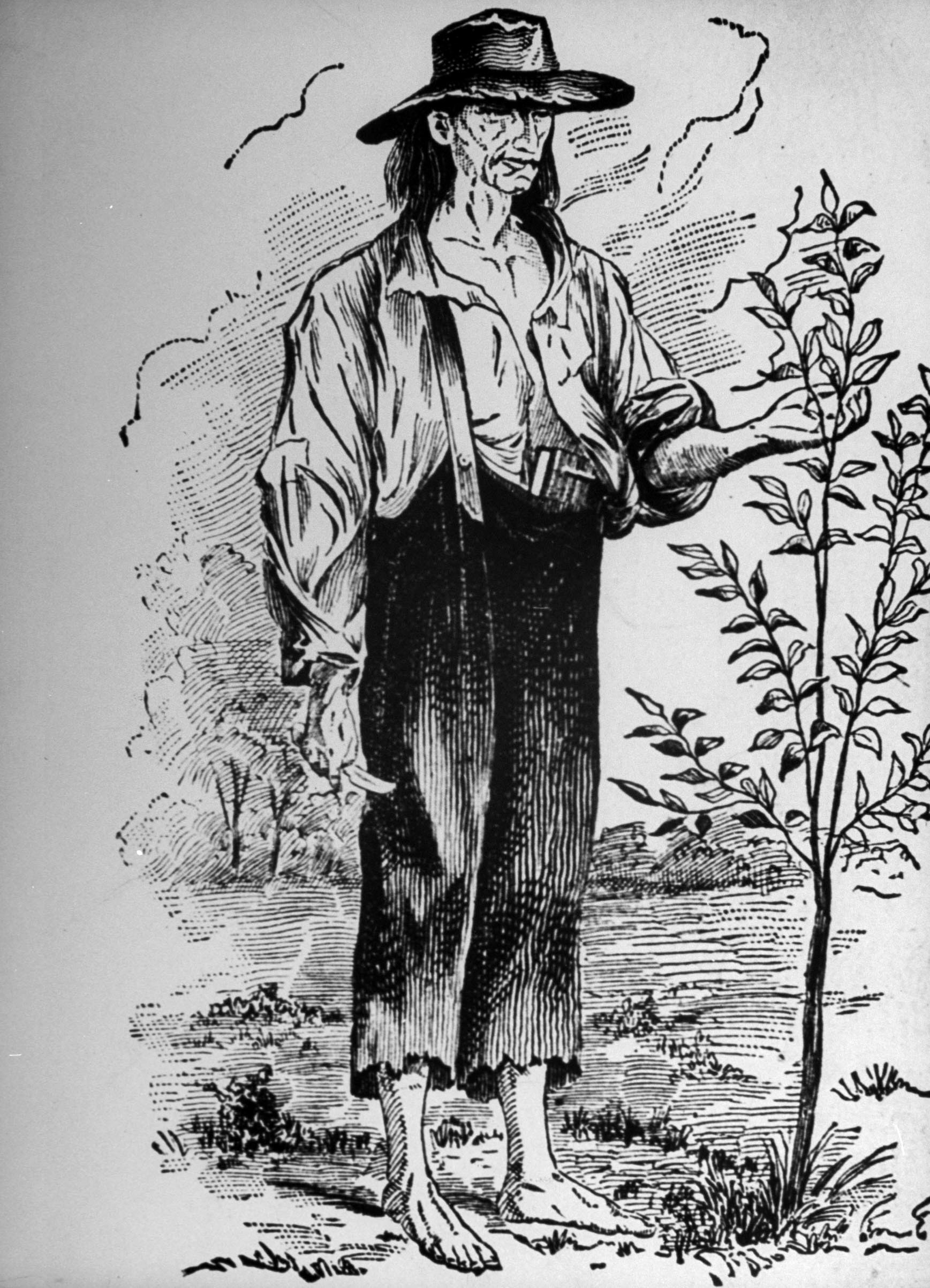
Through the years, American apple growers have developed new and improved varieties of the fruit. In addition, researchers have introduced new ways to grow, store, preserve, and use apples.
